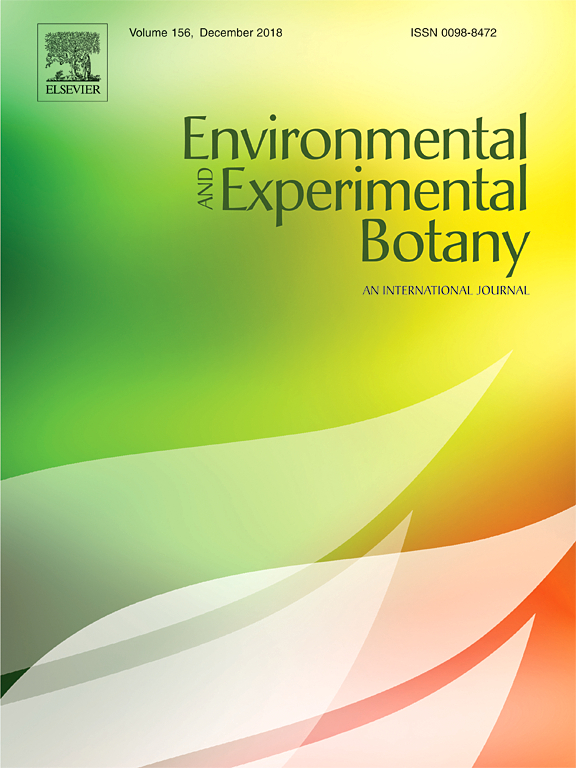Ver ítem
- xmlui.general.dspace_homeCentros Regionales y EEAsCentro Regional Mendoza - San JuanEEA MendozaArtículos científicosxmlui.ArtifactBrowser.ItemViewer.trail
- Inicio
- Centros Regionales y EEAs
- Centro Regional Mendoza - San Juan
- EEA Mendoza
- Artículos científicos
- Ver ítem
Blue light attenuation mediates morphological and architectural acclimation of Vitis vinifera cv. Malbec to shade and increases light capture
Resumen
Grapevine is one of the most important fruit crops worldwide. Vineyard management practices affect light interception and spectral characteristics inside the canopy. Plant photoreceptors drive shade acclimation responses after the perception of light signals such as low photosynthetic active radiation (PAR), low blue light (BL) levels and low red-to-far red ratios (R:FR). Grapevine plants effectively acclimate to shade but are irresponsive to variations
[ver mas...]
Grapevine is one of the most important fruit crops worldwide. Vineyard management practices affect light interception and spectral characteristics inside the canopy. Plant photoreceptors drive shade acclimation responses after the perception of light signals such as low photosynthetic active radiation (PAR), low blue light (BL) levels and low red-to-far red ratios (R:FR). Grapevine plants effectively acclimate to shade but are irresponsive to variations in R:FR perceived by phytochromes. To determine if BL attenuation mediate shade acclimation in this species, we manipulated sunlight reaching the plants by filtering. Vitis vinifera cv. Malbec plants were grown under low (LOW PAR) and high (HIGH PAR) neutral light environments, and under high light but attenuating the BL component of the spectrum (-BLUE). We evaluated morphological, biochemical and architectural responses to shade, and modelled light interception (LIE) and absorption (Ea) efficiencies. We found that plants grown under –BLUE mimicked morphological and architectural responses of plants cultivated under LOW PAR. In addition, LIE and Ea were higher in plants grown under –BLUE and LOW PAR than in HIGH PAR. Our findings suggest that morphological and architectural responses to shade are under the control of BL-photoreceptors in grapevine. However, BL attenuation failed to induce the accumulation of photosynthetic pigments in leaves observed under LOW PAR. Unchanged biomass accumulation across light treatments suggests that improved light capture counterbalanced irradiance reduction. These results might help in the design of practices that manipulate irradiance in the field, and that are increasingly being used as environment-friendly management tools to improve crop performance.
[Cerrar]

Autor
Gonzalez, Carina Veronica;
Jeréz, Damián Nicolás;
Jofre, María Florencia;
Guevara, Aranzazù;
Prieto, Jorge Alejandro;
Mazza, Carlos Alberto;
Williams, Larry E.;
Giordano, Carla Valeria;
Fuente
Environmental and Experimental Botany 157 : 112-120 (January 2019)
Fecha
2018-10
ISSN
0098-8472
Formato
pdf
Tipo de documento
artículo
Palabras Claves
Derechos de acceso
Restringido
 Excepto donde se diga explicitamente, este item se publica bajo la siguiente descripción: Creative Commons Attribution-NonCommercial-ShareAlike 2.5 Unported (CC BY-NC-SA 2.5)
Excepto donde se diga explicitamente, este item se publica bajo la siguiente descripción: Creative Commons Attribution-NonCommercial-ShareAlike 2.5 Unported (CC BY-NC-SA 2.5)

